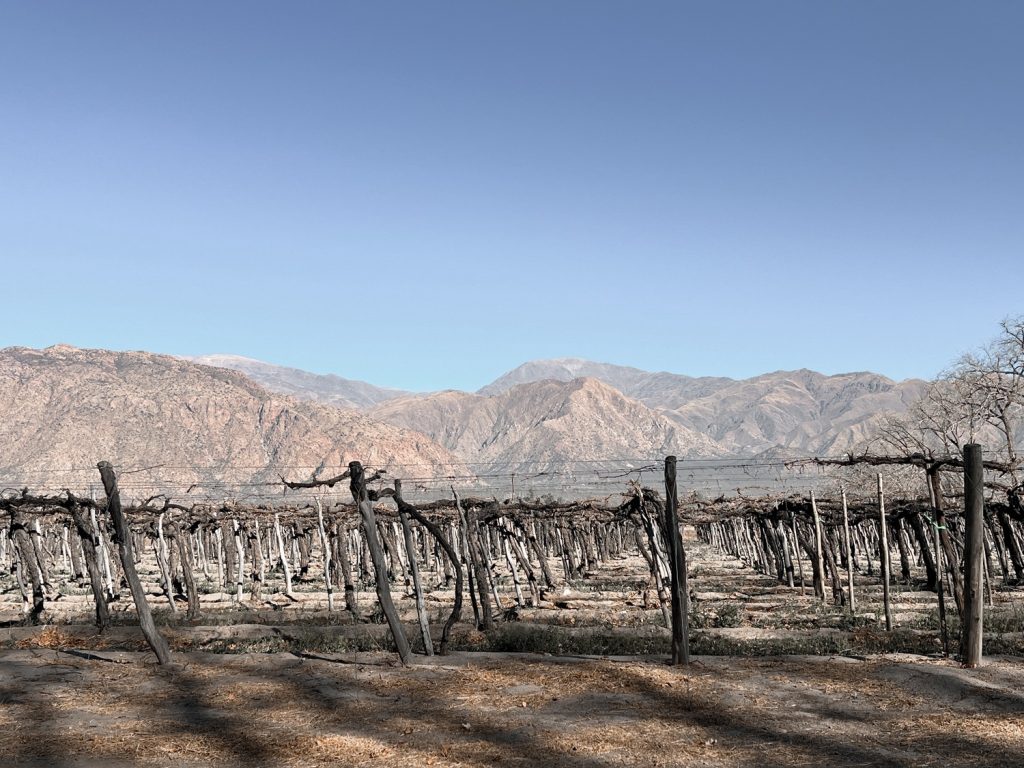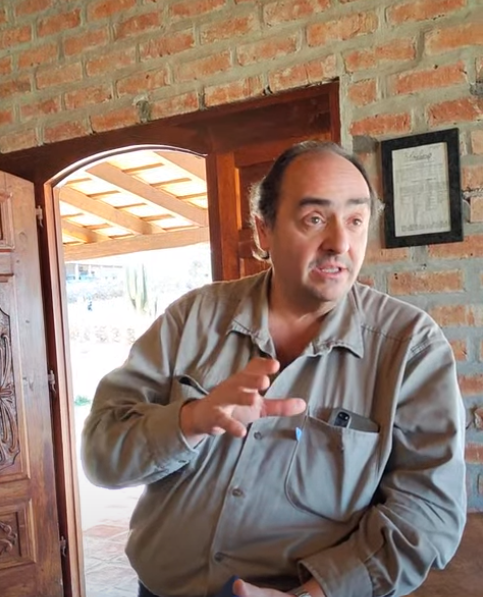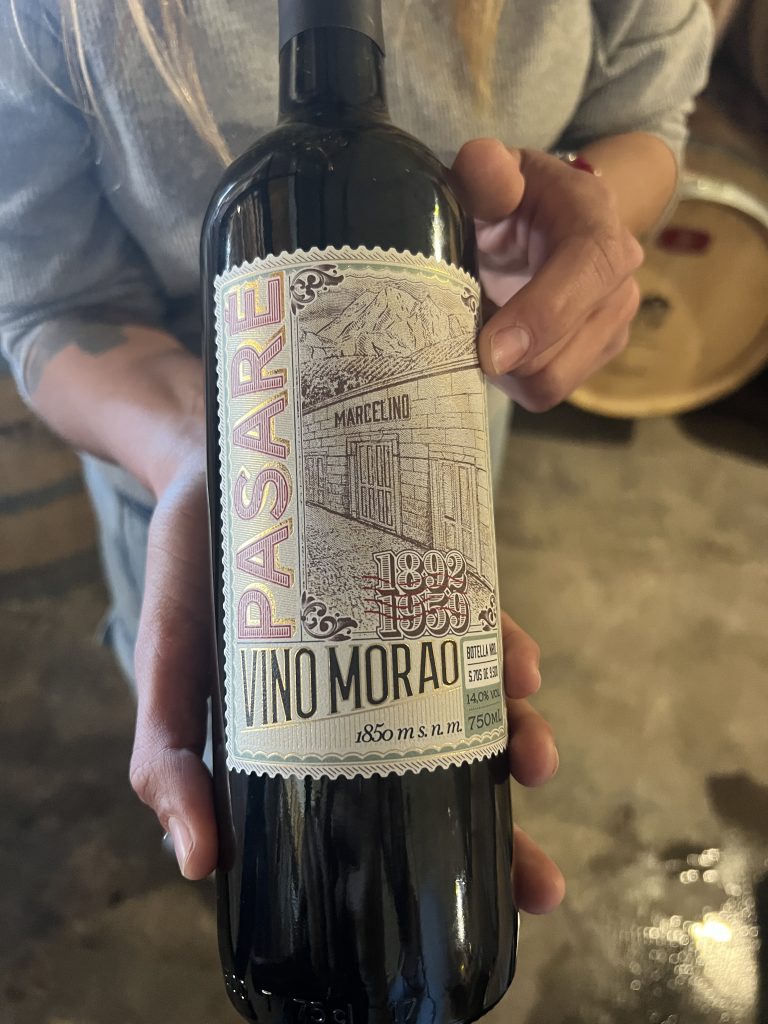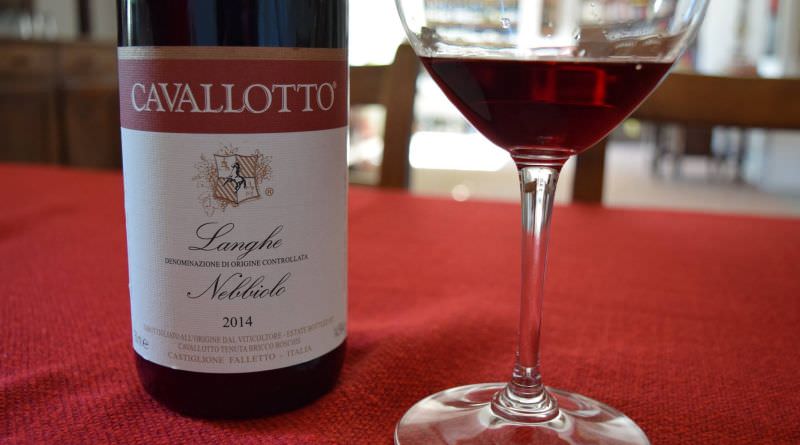Nel nostro percorrere le affascinanti, storiche e panoramiche rute argentine, l’intuito ci porta a lasciare momentaneamente il corso della ruta 40 e ad imboccare una strada sterrata che, dopo qualche chilometro di vista mozzafiato su vigne, montagne e cardones, ci conduce a Bodega Yacochuya.
Cafayate – Un luogo unico al mondo
CI troviamo nel cuore di una delle zone vitivinicole più fortunate e interessanti del pianeta. Siamo a circa 2.000 mlsm (sì, avete letto bene: d-u-e-m-i-l-a), circondati da montagne ben più alte che nel loro abbraccio protettore diventano simbolo e garanzia di qualità.
Siamo in presenza di terreni sabbiosi e rocciosi, tendenzialmente poveri di nutrienti e molto drenanti, anche se con una media di soli 300-500 mm di pioggia annui il ristagno idrico preoccupa ben poco. Le radici devono darsi da fare per garantirsi un giusto nutrimento, e il frutto di questo duro lavoro si riversa nel calice. Ma di questo avremo modo di parlare…

Il clima a Cafayate
Noi visitiamo Cafayate in agosto, dunque l’ultimo mese invernale in questo emisfero. Troviamo giornate soleggiate, parecchio soleggiate – potremmo allegare una prova fotografica dei nostri nasi rossi a fine giornata, ma rischieremmo di andare fuori tema – un tiepido vento costante e un’escursione termica da oscar. Le esigue piogge si concentrano nei mesi di gennaio e febbraio, poco prima della vendemmia. La scarsità di precipitazioni naturali consente un ottimale controllo dell’irrigazione artificiale, pratica diffusa in tutta l’Argentina, gestendo con precisione quanta acqua destinare alle piante.
Cosa rende l’irrigazione particolarmente “romantica” a Yacochuya è la provenienza dell’acqua. Parliamo di un’acqua purissima che sgorga da una sorgente nelle vicine montagne, il cui valore è celebrato proprio nel nome della Bodega. Yacochuya deriva dalla lingua Quechua (idioma indigeno dell’America del Sud) che può essere scomposto in due parti: “yaco”, che significa “acqua”, e “chuya” che significa “chiara” o “trasparente”. Yacochuya – acqua limpida.
Bodega Yacochuya
La storia di Bodega Yacochuya è strettamente legata alla famiglia Etchart, una delle famiglie pioniere nella viticoltura della zona, che inizia a coltivare la vigna all’inizio del XX secolo. In particolare, Arnaldo Etchart acquista questa proprietà negli anni ’80, con la chiara visione di produrre vini di altissima qualità, sfruttando il terroir unico di Cafayate.
Nel 1988, Arnaldo avvia una stretta collaborazione con Michel Rolland per migliorare ulteriormente la qualità dei vini prodotti a Yacochuya. Rolland contribuì a perfezionare le tecniche di vinificazione e a rafforzare il profilo dei vini della cantina.
Dopo la morte di Arnaldo Etchart, la proprietà della cantina è passata ai suoi figli, ed è proprio uno di loro, Pablo Etchart, che ci apre le porte di Bodega Yacochuya e ci accompagna nella scoperta delle sue eccellenze.
Visita alla bodega
Già il solo fatto di trovarci qui, circondati da montagne colorate e cardones (i cactus giganti argetini), respirare aria pulitissima e ammirare il panorama ci sembra un grosso privilegio. Ma non siamo qui – solo – per questo. Vogliamo conoscere la cantina e parlare con chi trasforma i grappoli di Torrontés e Malbec baciati dal sole andino.
Visitiamo la cantina, che è semplice, pulita, ben funzionale, e poi giungiamo in sala degustazione. Qui ci attende Pablo, che si rivela un gran chiacchierone (cosa che noi apprezziamo moltissimo!!) e, oltre a farci assaggiare una vasta selezione delle etichette di Yacochuya, ci offre diversi elementi di conoscenza e spunti di confronto.
Parliamo anche del mercato e dei prezzi del vino in Argentina: Pablo ci racconta di come Yacochuya insieme a tanti produttori della zona si siano battuti con la distribuzione – enoteche e ristoranti – per mantenere contenuto il costo del vino all’utenza. Parliamo di una maggiorazione del 20-50% rispetto al prezzo diretto in cantina – siamo lontani anni luce dal nostro amato belpaese… E il motivo è chiaro, semplice, quasi ovvio: mantenendo un prezzo “giusto”, il vino di qualità si vende, si diffonde, si fa conoscere. Win-win, direbbero quelli bravi.


Lo stile di Bodega Yacochuya
Grazie a condizioni pedoclimatiche uniche e privilegiate, le premesse sono ottime: nessun intervento in vigna, no a fitofarmaci e prodotti enologici. Gli enologi di Yacochuya scelgono di attendere il raggiungimento della piena maturazione dell’uva per concentrare il colore e il bilanciamento tra zuccheri e polifenoli. Non c’è una spasmodica rincorsa al contenimento del grado alcolico, si preferisce piuttosto accompagnare la materia prima nel suo percorso dalla terra al bicchiere.
Su un totale di 40 ettari troviamo vigne adulte, dai 20 fino ai 100 anni di età, sia a piede franco che innestate. In alcuni casi, ci racconta Pedro, si usa innestare il Malbec su piede Torrontes. Una parte della produzione di Bodega Yacochuya proviene da uve acquistate da altre cantine della valle Calchaquí. L’utilizzo del legno, esclusivamente francese, è morigerato e riservato ad alcune etichette.
Note di degustazione – a cura di Tiziano Catalano
Torrontés 2023
Naso con note sempre insistenti di agrume: mandarino e limone. Accompagnate – ancora una volta –dalla piccantezza del peperoncino (caratteristica che ritroviamo spesso nei vini di Cafayate). In bocca è ben equilibrato perché ha una bevuta rotonda ma succulenta, apparendo – appunto – caldo e fresco.
Coquena Rosado 2023 (100% Malbec)
Un naso particolare perché alle note di fragola gommosa (tanto da richiamare l’olfattiva di una famosissima marca di chewin gum..) accosta una leggera sensazione sabbiosa. In bocca è assolutamente rotondo e super beverino.
Coquena Blue Label Tannat 2023
Quello che non ti aspetti, appare! Sì, perché questo Tannat parte con una nota di pirazina mica da poco… ma abbiamo imparato che in Argentina (in particolare Cafayate) questa nota piccante che richiama (olfattivamente) – a volte – le pirazine la puoi trovare un po’ ovunque. Il frutto rosso, tuttavia, non è da meno. In bocca è conciso ma con una buona masticazione perché è si fresco e spumoso ma anche giustamente carnoso.
Coquena Red Label 2023 Malbec
Un naso leggermente accalorato perché appaiono sensazioni di calore con note forse un po’ “cotte” di confettura rossa. In bocca però è tutta un’altra storia! Fresco, piccante e una bevuta straordinariamente piacevole, che si rende ancora più elegante con un finale balsamico. In questo caso bocca batte naso 10 a 0!
Coquena Corte 2023(Cabernet Sauvignon, Malbec, Tannat)
Al naso parte deciso, concentrato e minimalista: un giusto frutto a bacca rossa con una sottile nota di pirazina. Stop! La bocca non è da meno perché garantisce una bevuta asciutta, fresca e spumosa. Un vino concreto!
Pasarè Vino Morao (Malbec 100%)
Un naso caldo, piccante e balsamico fa compagnia ad una bevuta equivalente con delle belle sensazioni di piccantezza, sempre asciutto anche se con maggiore carnosità. Finale amaro.
Yacochuya 2022 (Malbec 100%)
Diretto, preciso e anche lui, come il il blend, minimalista. Frutta rossa e balsamicità per un naso concreto ma (a nostro modo di vedere) perfettamente elegante! Una bocca rotonda ed asciutta dal finale amaro concludono la degustazione.
San Pedro 2022 (Malbec 100%)
Un naso caldo che mette in primo piano una confettura nera accompagnata da una leggera sensazione “pirazinosa”. Bocca calda e succulenta con un tannino leggermente sabbioso.
Osservazioni degustazioni Yacochuya
I vino di Bodega Yacochuya sono tutti dei gran bei vini! Di quelli che abbiamo potuto assaggiare non ce n’è stato uno in particolare che avesse le caratteristiche della grande bottiglia imperiale e potente (e spesso – se non sei davvero bravo – difficile da domare). Piuttosto, ci siamo trovati di fronte a vini diretti, immediati e minimalisti (in termini olfattivi), ma estremamente sinceri e soprattutto riconducibili ad un fattor comune che porta i nomi di Yacochuya e Cafayate.
Yacochuya e alcuni dei sui vini sono l’esempio di come si può fare un ottimo vino senza esagerare nella complessità gusto-olfattiva che a volte, soprattutto in alcune zone vitivinicole, è portata quasi all’esasperazione fino a risultare fin troppo eccessiva per il quotidiano – quantomeno per chi non proprio tutti i giorni mangia stracotto di manzo e T-bone alla griglia!
English version
As we travel along the fascinating, historic, and panoramic Argentine routes, our intuition leads us to temporarily leave the course of Route 40 and take a dirt road. After a few kilometers, with breathtaking views of vineyards, mountains, and cardones (giant Argentine cacti), we arrive at Bodega Yacochuya.
Cafayate – A unique place in the world
We find ourselves in the heart of one of the most fortunate and interesting wine regions on the planet. We are at about 2,000 meters above sea level (yes, you read that right: t-w-o-t-h-o-u-s-a-n-d), surrounded by much taller mountains that, in their protective embrace, become a symbol and guarantee of quality.
We are in the presence of sandy and rocky soils, generally poor in nutrients and highly draining. Even though there is an average of only 300-500 mm of rainfall per year, waterlogging is hardly a concern. The roots must work hard to secure the right amount of nutrients, and the fruit of this hard work pours into the glass. But we will have time to talk about that…
The climate in Cafayate
We visit Cafayate in August, the last winter month in this hemisphere. We experience sunny days, very sunny days—we could provide photographic proof of our red noses at the end of the day, but we’d risk going off-topic—a gentle constant breeze, and remarkable temperature fluctuations. The scant rainfall is concentrated in January and February, just before harvest. The scarcity of natural precipitation allows for optimal control of artificial irrigation, a common practice throughout Argentina, precisely managing how much water is allocated to the plants.
What makes irrigation particularly “romantic” at Yacochuya is the source of the water. We’re talking about pristine water that springs from a nearby mountain source, a value celebrated in the very name of the winery. Yacochuya derives from the Quechua language (the indigenous tongue of South America) and can be broken down into two parts: “yaco,” meaning “water,” and “chuya,” meaning “clear” or “transparent.” Yacochuya—clear water.
Bodega Yacochuya
The history of Bodega Yacochuya is closely linked to the Etchart family, one of the pioneer families in viticulture in the area, which began cultivating vineyards at the beginning of the 20th century. In particular, Arnaldo Etchart purchased this property in the 1980s, with a clear vision of producing wines of the highest quality, taking advantage of Cafayate’s unique terroir.
In 1988, Arnaldo initiated a close collaboration with Michel Rolland to further improve the quality of the wines produced at Yacochuya. Rolland contributed to refining winemaking techniques and enhancing the profile of the winery’s wines.
After Arnaldo Etchart’s death, ownership of the winery passed to his children, and it is one of them, Pablo Etchart, who opens the doors of Bodega Yacochuya to us and guides us in discovering its excellence.
Visit to the winery
Simply being here, surrounded by colorful mountains and cardones, breathing incredibly pure air, and admiring the view feels like a huge privilege. But we are not here—only—for that. We want to get to know the winery and speak with those who transform the sun-kissed Torrontés and Malbec grapes from the Andes.
We visit the winery, which is simple, clean, and well-organized, and then we arrive at the tasting room. Pablo awaits us there, revealing himself to be quite the talker (which we greatly appreciate!!), and besides offering us a wide selection of Yacochuya’s labels to taste, he provides us with several insights and points of discussion.
We also talk about the wine market and prices in Argentina. Pablo tells us how Yacochuya, along with many producers in the area, have fought with distributors—wine shops and restaurants—to keep wine prices affordable for consumers. We’re talking about a markup of 20-50% compared to the direct price at the winery—light years away from our beloved country… And the reason is clear, simple, almost obvious: by keeping a “fair” price, quality wine sells, spreads, and becomes known. A win-win, as the experts would say.
The style of Bodega Yacochuya
Thanks to unique and privileged soil and climate conditions, the foundation is solid: no intervention in the vineyard, no pesticides or enological products. Yacochuya’s winemakers wait for the grapes to fully ripen to concentrate color and balance sugars and polyphenols. There is no frantic pursuit to contain alcohol levels; instead, the winemaking process gently guides the raw material from the earth to the glass.
On a total of 40 hectares, there are mature vines, ranging from 20 to 100 years old, both ungrafted and grafted. In some cases, Pedro tells us, Malbec is grafted onto Torrontés rootstocks. Part of Bodega Yacochuya’s production comes from grapes purchased from other wineries in the Calchaquí Valley. The use of oak, exclusively French, is moderate and reserved for certain labels.
Tasting notes – by Tiziano Catalano
Torrontés 2023 – The nose consistently reveals citrus notes: tangerine and lemon, accompanied—yet again—by the spiciness of chili pepper (a characteristic we often find in the wines of Cafayate). On the palate, it is well-balanced, offering a round yet juicy experience, appearing both warm and fresh.
Coquena Rosado 2023 (100% Malbec) – An unusual nose, with notes of gummy strawberry (almost reminiscent of the scent of a famous brand of chewing gum) combined with a slight sandy sensation. On the palate, it’s absolutely round and incredibly drinkable.
Coquena Blue Label Tannat 2023 – What you don’t expect appears! Yes, because this Tannat starts with quite a noticeable pyrazine note… but we’ve learned that in Argentina (especially in Cafayate), this spicy note reminiscent of pyrazines can sometimes be found almost everywhere. However, the red fruit is not far behind. On the palate, it’s concise but with a good chewiness because it’s both fresh and foamy yet also suitably meaty.
Coquena Red Label 2023 Malbec – The nose is slightly warm as there are sensations of heat with perhaps slightly “cooked” notes of red jam. However, the palate is a completely different story! Fresh, spicy, and extraordinarily pleasant to drink, becoming even more elegant with a balsamic finish. In this case, the palate beats the nose 10 to 0!
Coquena Corte 2023 (Cabernet Sauvignon, Malbec, Tannat) – The nose starts off decisive, concentrated, and minimalist: just the right amount of red fruit with a subtle pyrazine note. Stop! The palate is no different because it offers a dry, fresh, and foamy sip. A straightforward wine!
Pasarè Vino Morao (100% Malbec) – A warm, spicy, and balsamic nose accompanies an equivalent palate with pleasant spicy sensations, always dry even though it is slightly meatier. Bitter finish.
Yacochuya 2022 (100% Malbec) – Direct, precise, and like the blend, minimalist. Red fruit and balsamic hints give the nose a straightforward but (in our opinion) perfectly elegant character! A round and dry palate with a bitter finish completes the tasting.
San Pedro 2022 (100% Malbec) – A warm nose that highlights black jam accompanied by a slight pyrazine sensation. Warm and succulent on the palate with slightly sandy tannins.
Yacochuya tasting observations – The wines of Bodega Yacochuya are all excellent wines! Among those we were able to taste, there wasn’t one in particular that had the characteristics of a grand, imperial, and powerful bottle (which, often—if you’re not really skilled—can be difficult to handle). Instead, we found direct, immediate, and minimalist wines (in terms of aroma), but extremely sincere and, above all, connected to a common thread that bears the names Yacochuya and Cafayate.
Yacochuya and some of its wines are examples of how great wine can be made without exaggerating the gustatory-olfactory complexity, which, in some wine regions, is sometimes pushed almost to the point of excess, becoming overwhelming for everyday consumption—at least for those who don’t eat braised beef and grilled T-bones every day!





Lascia un commento